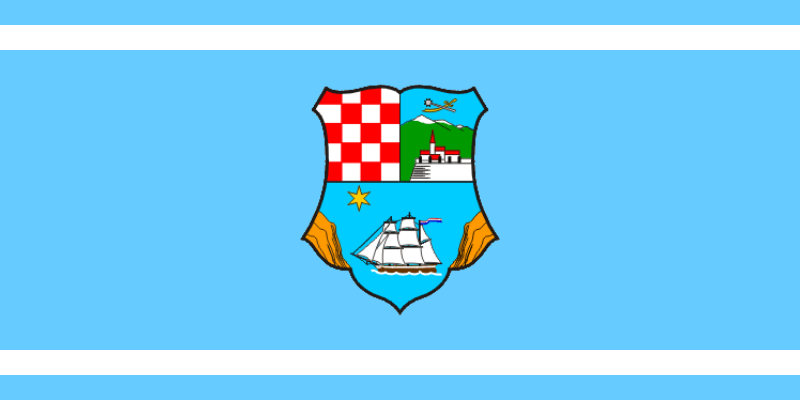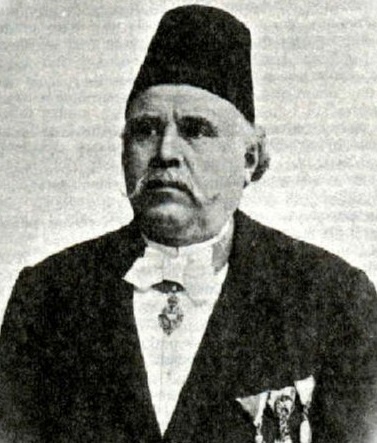|
Viškovo
Viškovo is a village and a municipality in the Primorje-Gorski Kotar County in western Croatia. Population In the 2011 census, there were a total of 14,445 inhabitants, in the following naselja, settlements: * Kosi, Croatia, Kosi, population 808 * Marčelji, population 2,148 * Marinići, Croatia, Marinići, population 3,894 * Mladenići, population 1,254 * Saršoni, population 1,532 * Sroki, Croatia, Sroki, population 1,741 * Viškovo, population 3,068 In the same census, there were 85% Croats, 5.84% Serbs of Croatia, Serbs, 2.36% Bosniaks of Croatia, Bosniaks. History Historians believe that the village of Viškovo was founded in the 18th century. It developed on Viškoven brege, so in the beginning the settlement was called Viškov breg or Viški. References Municipalities of Croatia Populated places in Primorje-Gorski Kotar County {{PrimorjeGorskiKotar-geo-stub ... [...More Info...] [...Related Items...] OR: [Wikipedia] [Google] [Baidu] |
Marčelji
Marčelji is a village in Hrvatsko Primorje, Primorje, Croatia, located north of Viškovo. The population is 2,148 (census 2011). References Populated places in Primorje-Gorski Kotar County {{PrimorjeGorskiKotar-geo-stub ... [...More Info...] [...Related Items...] OR: [Wikipedia] [Google] [Baidu] |
Marinići, Croatia
Marinići is a village in Viškovo municipality, Croatia Croatia, officially the Republic of Croatia, is a country in Central Europe, Central and Southeast Europe, on the coast of the Adriatic Sea. It borders Slovenia to the northwest, Hungary to the northeast, Serbia to the east, Bosnia and Herze .... References Populated places in Primorje-Gorski Kotar County {{PrimorjeGorskiKotar-geo-stub ... [...More Info...] [...Related Items...] OR: [Wikipedia] [Google] [Baidu] |
Municipalities Of Croatia
Municipalities in Croatia (; plural: ''općine'') are the second-lowest administrative unit of government in the country, and along with List of cities in Croatia, cities and towns (''grad'', plural: ''gradovi'') they form the second level of administrative subdisivion, after Counties of Croatia, counties. Each municipality consists of one or more settlements (''naselja'') , which are the third-level spatial units of Croatia. Though equal in powers and administrative bodies, municipalities and towns differ in that municipalities are usually more likely to consist of a collection of villages in rural or suburban areas, whereas towns are more likely to cover urbanised areas. Law of Croatia, Croatian law defines municipalities as local self-government units which are established, in an area where several inhabited settlements represent a natural, economic and social entity, related to one other by the common interests of the area's population. As of 2023, the 21 counties of Croatia ... [...More Info...] [...Related Items...] OR: [Wikipedia] [Google] [Baidu] |
Primorje-Gorski Kotar County
Primorje – Gorski Kotar County (, ) is a Counties of Croatia, county in western Croatia, most of it based in the historical and cultural region called Croatia proper and some of it in Istria, including the Bay of Kvarner, the surrounding Northern Croatian Littoral, and the mountainous region of Gorski Kotar. Its center is Rijeka. The county's population was 296,195 at the 2011 census. The county includes the island territories of Krk (island), Krk, Cres (island), Cres, Lošinj and Rab (island), Rab. It borders Slovenia. The county is divided: * City of Rijeka (county seat) * Town of Bakar, Croatia, Bakar * Town of Cres (town), Cres * Town of Crikvenica * Town of Čabar * Town of Delnice * Town of Kastav * Town of Kraljevica * Town of Krk (town), Krk * Town of Mali Lošinj * Town of Novi Vinodolski * Town of Opatija * Town of Rab (town), Rab * Town of Vrbovsko * Municipality of Baška, Croatia, Baška * Municipality of Brod Moravice * Municipality of Čavle * Municipality of D ... [...More Info...] [...Related Items...] OR: [Wikipedia] [Google] [Baidu] |
Saršoni
Saršoni is a village in Croatia Croatia, officially the Republic of Croatia, is a country in Central Europe, Central and Southeast Europe, on the coast of the Adriatic Sea. It borders Slovenia to the northwest, Hungary to the northeast, Serbia to the east, Bosnia and Herze .... References Populated places in Primorje-Gorski Kotar County {{PrimorjeGorskiKotar-geo-stub ... [...More Info...] [...Related Items...] OR: [Wikipedia] [Google] [Baidu] |
Telephone Numbers In Croatia
This is an alphabetical list by town of phone dialing codes in Croatia. The country calling code for Croatia is +385. Croatia received this new country code following the breakup of the SFR Yugoslavia (+38) in 1991. Calling scheme The international call prefix depends on the country of origin of the call, e.g. 00 from most European countries, and 011 from North America. For domestic calls (within the country), 0 must be dialed before the area code. The prefix for international calls from Croatia is 00 (e.g. for a United States number 00 1 xxx should be dialed). An example for calling a line in Bjelovar-Bilogora County (area code 043) is as follows: xxx xxxx (within the 043 area) 0 43 xxx xxxx (within Croatia) +385 43 xxx xxxx (outside Croatia) List of area codes Telephone area codes closely correspond to postal codes in Croatia and are assigned to counties. Both the Zagreb County and the City of Zagreb have the same area code (1), which is further divide ... [...More Info...] [...Related Items...] OR: [Wikipedia] [Google] [Baidu] |
Village
A village is a human settlement or community, larger than a hamlet but smaller than a town with a population typically ranging from a few hundred to a few thousand. Although villages are often located in rural areas, the term urban village is also applied to certain urban neighborhoods. Villages are normally permanent, with fixed dwellings; however, transient villages can occur. Further, the dwellings of a village are fairly close to one another, not scattered broadly over the landscape, as a dispersed settlement. In the past, villages were a usual form of community for societies that practice subsistence agriculture and also for some non-agricultural societies. In Great Britain, a hamlet earned the right to be called a village when it built a church.-4; we might wonder whether there's a point at which it's appropriate to talk of the beginnings of French, that is, when it wa ... ''village'', from Latin ''villāticus'', ultimately from Latin ''villa'' (English ''vi ... [...More Info...] [...Related Items...] OR: [Wikipedia] [Google] [Baidu] |
Croatian Bureau Of Statistics
The Croatian Bureau of Statistics ( or DZS) is the Croatian national statistics bureau. History The bureau was formed in 1875 in Austria-Hungary as the ''Zemaljski statistički ured'' for the Kingdom of Croatia, Slavonia and Dalmatia. In 1924, the bureau was renamed to the ''Statistical Office in Zagreb'' (''Statistički ured u Zagrebu''). In 1929, after royal monarchy was proclaimed in the Kingdom of Serbs, Croats and Slovenes the bureau lost its financial and technical independence. In 1939 with the formation of the Banovina of Croatia, the office was made subject to the presidential office on the Ban's administration. In 1941 the Independent State of Croatia was formed and an ''Office of General State Statistics'' existed during this time under the control of the presidential government. In 1945 the ''Statistical Office of the People's Republic of Croatia'' was formed. In 1951 it was renamed to the ''Bureau of Statistics and Evidence'', in 1956 to the ''Bureau of Statis ... [...More Info...] [...Related Items...] OR: [Wikipedia] [Google] [Baidu] |
Bosniaks Of Croatia
The Bosniaks (, Cyrillic: Бошњаци, ; , ) are a South Slavic ethnic group native to the Southeast European historical region of Bosnia, today part of Bosnia and Herzegovina, and who share a common ancestry, culture, history and the Bosnian language. Traditionally and predominantly adhering to Sunni Islam, they constitute native communities in what is today Bosnia and Herzegovina, Serbia, Montenegro, Croatia and the Republic of Kosovo. Largely due to displacement stemming from the Bosnian War in the 1990s they also make up a significant diaspora with several communities across Europe, the Americas and Oceania. Bosniaks are typically characterized by their historic ties to the Bosnian historical region, adherence to Islam since the 15th and 16th centuries, culture, and the Bosnian language. Bosniaks have also frequently been denoted Bosnian Muslims in the Anglophone sphere mainly owing to this having been the primary verbiage used in the media coverage of the Bosnian ... [...More Info...] [...Related Items...] OR: [Wikipedia] [Google] [Baidu] |
Serbs Of Croatia
The Serbs of Croatia ( sh-Cyrl-Latn, separator=" / ", Срби у Хрватској, Srbi u Hrvatskoj) or Croatian Serbs ( sh-Cyrl-Latn, separator=" / ", Хрватски Срби, Hrvatski Srbi) constitute the largest national minority in Croatia. The community is predominantly Eastern Orthodoxy in Croatia, Eastern Orthodox Christian by religion, as opposed to the Croats who are Catholic Church in Croatia, Catholic. In some regions of modern-day Croatia, mainly in southern Dalmatia, ethnic Serbs possibly have been present from the Early Middle Ages. Serbs from modern-day Serbia and Serbs of Bosnia and Herzegovina, Bosnia-Herzegovina started actively migrating to Croatia at a time when the Habsburg monarchy was engaged in a series of wars against the Ottoman Empire. Great Migrations of the Serbs, Several migration waves happened after 1538, when the Emperor Ferdinand I granted them the right to settle on the territory of the Military Frontier. In exchange for land and exempti ... [...More Info...] [...Related Items...] OR: [Wikipedia] [Google] [Baidu] |
Croats
The Croats (; , ) are a South Slavs, South Slavic ethnic group native to Croatia, Bosnia and Herzegovina and other neighboring countries in Central Europe, Central and Southeastern Europe who share a common Croatian Cultural heritage, ancestry, Culture of Croatia, culture, History of Croatia, history and Croatian language, language. They also form a sizeable minority in several neighboring countries, namely Croats of Slovenia, Slovenia, Burgenland Croats, Austria, the Croats in the Czech Republic, Czech Republic, Croats in Germany, Germany, Croats of Hungary, Hungary, Croats of Italy, Italy, Croats of Montenegro, Montenegro, Croats of Romania, Romania, Croats of Serbia, Serbia and Croats in Slovakia, Slovakia. Due to political, social and economic reasons, many Croats migrated to North and South America as well as New Zealand and later Australia, establishing a Croatian diaspora, diaspora in the aftermath of World War II, with grassroots assistance from earlier communities an ... [...More Info...] [...Related Items...] OR: [Wikipedia] [Google] [Baidu] |





